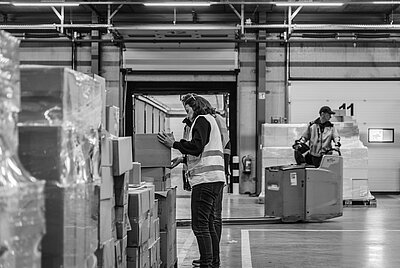In September and November 2021, Germany saw an unexpected drop in retail sales and this was echoed across the Eurozone. Uncertainty around emerging variants of coronavirus means that retail is still reliant on the global health picture. Couple this with savvy consumers who can research and compare prices in seconds via their mobile devices from the comfort of their homes and retailers have their work cut out to create an enticing in-store customer experience that converts into sales.
Omnichannel has become the go-to solution to these problems for retailers in Europe, with many expanding how consumers can buy and receive their goods. But as consumers cautiously head back to retail stores, how can retailers expand their omnichannel approach to keep in-store sales buoyant?
Stand-out service
With so much of the omnichannel experience taking place in a digital space, the emphasis on stand-out customer service has increased. Recent research from McKinsey & Company shows that consumer’s expectations are dramatically changing – with more emphasis being placed on trusted interactions and great customer experience.
With reduced levels of direct face-to-face contact in an omnichannel approach, it’s more important than ever that brands get the crucial customer experience right, when they do have a customer in front of them.
This has potential for physical stores to outperform their online rivals and create memorable customer experiences. If you’re offering click and collect, then make sure your in-store collection is as seamless as possible for your customer. Consider how they experience your store – is it clear where they need to go? How long will they have to wait? If you have in-store ordering points or tablets, is there a waiting area? Can customers check in-store stock levels online?
Alex Naughton, Head of Klarna UK & Ireland, “If retailers are to see a return on their omnichannel investment, they need to ensure they avoid any disconnect and fully understand shopper priorities. It’s clear in-store shopping is still incredibly important for consumers, so retailers should look at how they can make their stores a more experiential, cultural space that inspires shoppers.”
The last mile is often the most important in your customer’s experience – so make it count.
Data
A brave approach to omnichannel requires a deeper dive into your data. It’s easy to think that the brick and mortar store is out-dated but McKinsey & Company’s report shows how to re-think your approach.
On average, 80% of people make their purchasing and brand decisions online. But what the McKinsey research shows is what happens once those people are in-store, either collecting items or just browsing. They buy more. When you combine online and in-store, your sales increase. German-based sports retailer, PUMA, saw exactly this in 2020 with their omnichannel approach.
Blending online and in-store information is essential to a brave omnichannel approach in 2022 and it’s vital that you’re looking at your data to lead it. Are you collecting data on additional purchases when customers are collecting their orders? Are you driving more footfall into stores by offering benefits like free in-store collection or next day collection?
Take a deeper look. Analyse which products are frequently purchased during the same transaction while in store. With that data to hand, your staff can make recommendations or augment the shopping experience by checking in with the shopper while they are browsing so if needed it can be ready for checkout when the shopper comes to pay. Little things but they matter a lot and could be the USP you need to keep that shopper loyal. These little things are only possibly if you are dovetailing your online and offline systems in a sophisticated omnichannel approach.
Personalisation
Personalisation is the cornerstone of any brave omnichannel approach – yielding 10-15% higher conversion rates than non-personalised offers. And many retailers already offer small-scale personalisation that you see every day – UK supermarket chain Sainsbury’s gathers purchasing data and sends customers discount vouchers for items they regularly buy.
But personalisation is now a major player in omnichannel strategy – because of its ability to react to trends and data much more quickly. Personalised email offers, in-store promotions targeted at frequent store visitors, localised discounts and events – all of these give customers more of what they want, when they want it.
IKEA has successfully driven up in-store visits by carefully targeted Facebook ads – selecting audiences by store catchment area to promote sales events. And with 87% of people saying that shops are just as important to them now as they were before the pandemic, it’s more important than ever to drive consumers towards stores through personalisation.
“When you get to know your customers and you’re sending them more personalised things that they want to see, it just helps everything — we see revenue grow, engagement rates grow, better traffic, just a better overall customer experience.” David Witts, CRM Manager, PUMA.
Find out how Worldpack can help you strengthen your omnichannel approach by talking to one of our account managers. You can email at online@worldpack.eu or ring us on +31(0) 88 494 20 80.


